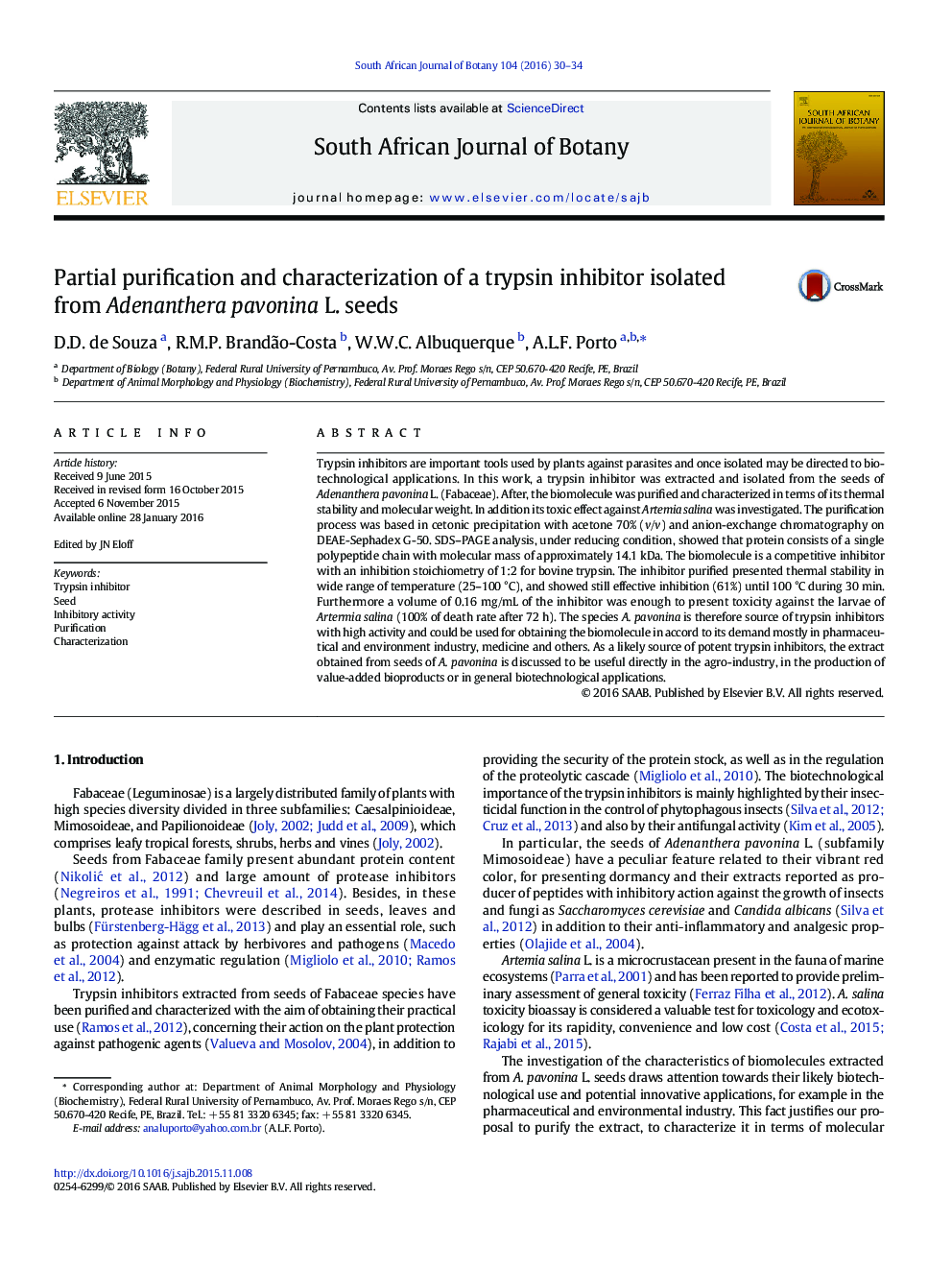| Article ID | Journal | Published Year | Pages | File Type |
|---|---|---|---|---|
| 4520227 | South African Journal of Botany | 2016 | 5 Pages |
•A 14.1 kDa trypsin inhibitor from Adenanthera pavonina seeds was purified and characterized.•The inhibitor was heat stable and high activity was retained over a wide pH range.•The trypsin inhibitor was toxic against Artemia saline.
Trypsin inhibitors are important tools used by plants against parasites and once isolated may be directed to biotechnological applications. In this work, a trypsin inhibitor was extracted and isolated from the seeds of Adenanthera pavonina L. (Fabaceae). After, the biomolecule was purified and characterized in terms of its thermal stability and molecular weight. In addition its toxic effect against Artemia salina was investigated. The purification process was based in cetonic precipitation with acetone 70% (v/v) and anion-exchange chromatography on DEAE-Sephadex G-50. SDS–PAGE analysis, under reducing condition, showed that protein consists of a single polypeptide chain with molecular mass of approximately 14.1 kDa. The biomolecule is a competitive inhibitor with an inhibition stoichiometry of 1:2 for bovine trypsin. The inhibitor purified presented thermal stability in wide range of temperature (25–100 °C), and showed still effective inhibition (61%) until 100 °C during 30 min. Furthermore a volume of 0.16 mg/mL of the inhibitor was enough to present toxicity against the larvae of Artermia salina (100% of death rate after 72 h). The species A. pavonina is therefore source of trypsin inhibitors with high activity and could be used for obtaining the biomolecule in accord to its demand mostly in pharmaceutical and environment industry, medicine and others. As a likely source of potent trypsin inhibitors, the extract obtained from seeds of A. pavonina is discussed to be useful directly in the agro-industry, in the production of value-added bioproducts or in general biotechnological applications.
